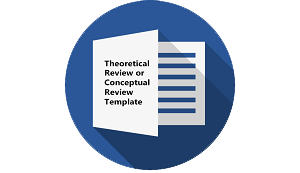Pembinaan Iklim Sekolah K-7 Sebagai Upaya Meningkatkan Efektivitas Belajar: Best Practises
DOI:
https://doi.org/10.30957/cendekia.v13i2.601Keywords:
School Climate and Culture, Quality ImprovementAbstract
Seven-K School Climate Development as an Effort to Improve the Effectiveness of Learning in Pasaman District managerial schools, as well as how teachers and students attempt to utilize the climate and school culture as a source of learning. For Citizenship Education (PKn) teachers and Social Sciences (IPS) teachers. Principal's leadership, influenced by supervision, school climate, and community support. Aspects of school discipline need to be improved, as seen from the incomplete recap of the presence of teachers and staff; the absence of student records that violate the code of conduct; the absence of proof of examination of teacher and employee assignments by the principal; not all teachers make learning tools (only 50-60%); incomplete list of teachers attending the flag ceremony; there is no government regulation (PP 30/1980) regarding the rules of civil servants; there are no programs and documents giving rewards and punishment to teachers and employees. In the field of management: incomplete description of the tasks of each organization; there is no evaluation book on the implementation of school programs, not yet transparent school financial management. In the field of Seventh-K (K7) (cleanliness, beauty, order, safety, family, shade, and health) there are still findings such as student toilet cleanliness that is poorly maintained, adequate trash bins are not yet available, school gardens are poorly maintained, many students are late at hours first, picket teachers have not been functioning to improve discipline, and school yearning has not been sufficient In terms of output or quantitative learning outcomes, it has also not shown encouraging results. The 2018 UN results for the junior high school level, the writer's managerial area reached a graduation rate of 93.81%. Although UN results can be categorized as good because the graduation rate reaches 95.78% (2017); 96.59% (2018), but the results are almost positively correlated with high school graduation rates.
Downloads
References
Hadiyanto. 2000. Iklim Sekolah, Iklim Kelas. Teori, Riset, dan Aplikasi. Padang: UNP.
Moeliono, Anton M (Penyunting Penyelia).1991. Kamus Besar Bahasa Indonesia Edisi Kedua.Jakarta: Balai Pustaka.
Sergiovani, T.J. 1997. The Principalship a Reflektive, Practice-Perspektives Massachuset. Allyn an bacon.
Downloads
Published
How to Cite
Issue
Section
License
Authors who publish with this journal agree to the following terms:
- Authors retain copyright and grant the journal right of first publication with the work simultaneously licensed under a Creative Commons Attribution-ShareAlike 4.0 International License that allows others to share the work with an acknowledgement of the work's authorship and initial publication in this journal.
- Authors are able to enter into separate, additional contractual arrangements for the non-exclusive distribution of the journal's published version of the work (e.g., post it to an institutional repository or publish it in a book), with an acknowledgement of its initial publication in this journal.
- Authors are permitted and encouraged to post their work online (e.g., in institutional repositories or on their website) prior to and during the submission process, as it can lead to productive exchanges, as well as earlier and greater citation of published work (See The Effect of Open Access).












